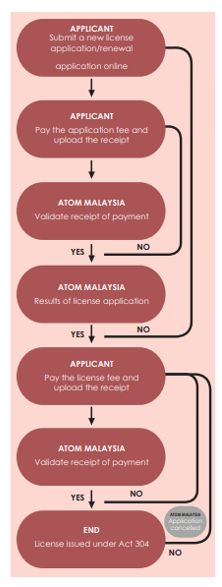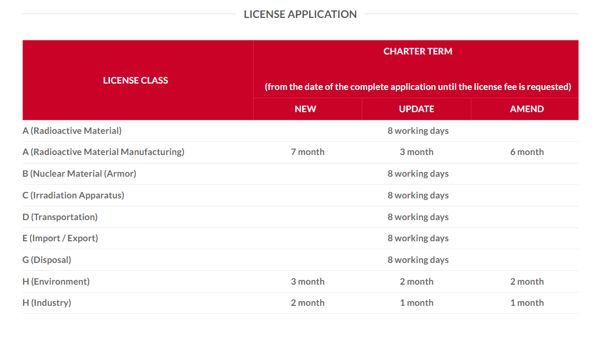Atomic energy holds immense potential for fostering economic growth and scientific progress. Nevertheless, its utilization requires careful management due to the substantial risks it poses to the environment and public safety. To harness the power of atomic energy responsibly, Malaysia has established a comprehensive system of atomic energy licensing. This article discusses the key aspects of atomic energy licensing in Malaysia, shedding light on the legal framework behind atomic energy licensing in Malaysia, the licence application process, and the safety and security measures imposed under the laws.
The Legal Framework behind Atomic Energy Licensing in Malaysia
The Atomic Energy Licensing Act 1984 ("AELA") is the primary legislation that governs atomic energy licensing in Malaysia. The AELA sets out the requirements for obtaining a licence, the types of licences that are available, and the responsibilities of licence holders.
The Department of Atomic Energy Malaysia ("Atom Malaysia"), formerly known as the Atomic Energy Licensing Board, is the government agency under the Ministry of Science, Technology & Innovation which is responsible for overseeing and regulating atomic energy activities in Malaysia.
Atom Malaysia's primary objective is to ensure all atomic energy activities are "safe, secured, and safeguarded to protect the public, workers and the environment."1
Atom Malaysia issues licences for the use of radioactive material, prescribed substances, and irradiating apparatus, amongst others. There are currently eight (8) types of licences that are issued by Atom Malaysia.2 (Refer Table 1)
|
Class of Licence |
Purpose of Licence |
|
Class A |
Manufacturing, trading in, producing, processing, purchasing, owning, possessing, using, transferring, handling, selling, or storing radioactive material. |
|
Class B |
Manufacturing, trading in, producing, processing, purchasing, owning, possessing, using, transferring, handling, selling, or storing nuclear material. |
|
Class C |
Manufacturing, trading in, producing, processing, purchasing, owning, possessing, using, transferring, handling, selling, or storing irradiating apparatus. |
|
Class D |
Transportation of radioactive materials, nuclear materials, prescribed substances, or their wastes. |
|
Class E |
Export or import radioactive materials, nuclear materials, prescribed substances, irradiating apparatus, or their wastes. |
|
Class F |
To site, construct or operate a nuclear installation. |
|
Class G |
(a) Disposal of radioactive materials, nuclear materials, prescribed objects, or their waste; (b) Storage of radioactive materials, nuclear materials, prescribed substances, or their waste prior to their disposal; or (c) Decommission of a milling installation, nuclear installation, waste treatment facility, irradiating apparatus, or sealed source apparatus. |
|
Class H |
Other activities that do not fall under Class A-G, namely licences for industry and environmental aspects. |
TABLE 1
Licence Application Process
Before applying for an atomic energy licence, an applicant must first determine the specific class of atomic energy licence required to deal with their specific radioactive activities.
Once the applicant has determined the class of atomic licensing required, they may proceed with the licence application by filling in the required application forms, providing the relevant supporting documents as required by Atom Malaysia, and paying the required application fees.
Atom Malaysia will then proceed to review the application and determine whether a site visit and inspection of premises and/or equipment is necessary. Site visits, inspections, and evaluations of the proposed activities, safety precautions, and adherence to regulatory standards are part of Atom Malaysia's procedure for reviewing licence applications.
Atom Malaysia shall issue the licence to the applicant once they are satisfied that the applicant has complied with all applicable regulations, guidelines, and safety standards. Atom Malaysia will continuously monitor all licence holders to ensure continuous compliance with the relevant guidelines and safety standards.
A summary of the licence application procedure and charter terms
are reproduced (Refer Diagram 1).

Procedure (Diagram 1)
Source: reproduced based on information obtained from https://www.aelb.gov.my/malay/dokumen/e-book%20aelb/mobile/index.html.

Charter term (Diagram 2)
Source: https://www.aelb.gov.my/v2/en/charter/
Safety and Security Measures
Safety is paramount in the field of atomic energy, and Atom Malaysia enforces stringent regulations to protect the public, the environment, and workers involved in atomic energy-related activities.
The Atomic Energy Licensing (Basic Safety Radiation Protection) Regulations 2010 ("2010 Regulations") are the regulations which outline the basic safety requirements for "all activities involving ionizing radiation."3
Essentially, the 2010 Regulations require all licence holders to ensure that "all exposure from any particular radiation source within a practice, except for therapeutic medical exposures, protection and safety shall be optimized in order that the magnitude of individual doses, the number of people exposed and the likelihood of incurring exposures be kept as low as reasonably achievable."4
This is to be done by taking into account economic and social factors, under the condition that the radiation source's doses to individuals adhere to the dose constraint.5
The 2010 Regulations outline the dose constraints and dose limits for workers, members of the public, apprentices and students, as well as special circumstances. The 2010 Regulations also detail the duties of licence holders and employers to ensure the workers are protected from occupational exposure to radioactive material.
Further to the above, the 2010 Regulations also outline protection measures for medical exposure to radioactive material, protection measures for public exposure to radioactive material, safety procedures for potential exposure, and the requirements for intervention, amongst other safety requirements.
Conclusion
As Malaysia continues to explore the benefits of atomic energy-related activities, Atom Malaysia plays a vital role in ensuring responsible and safe utilization of this powerful resource. By ensuring adherence to strict licensing procedures, imposing stringent safety measures, and continuously monitoring licence holders, Malaysia's commitment to atomic energy licensing remains focused on safeguarding its people, the environment, and the nation's sustainable future.
Footnotes
1. https://radars.mosti.gov.my/group/jabatan-tenaga-atom.
2. Radiation Protection (Licensing) Regulations 1986.
3. Regulation 2, Atomic Energy Licensing (Basic Safety Radiation Protection) Regulations 2010.
4. Regulation 5, Atomic Energy Licensing (Basic Safety Radiation Protection) Regulations 2010.
5. Regulation 5, Atomic Energy Licensing (Basic Safety Radiation Protection) Regulations 2010.
The content of this article is intended to provide a general guide to the subject matter. Specialist advice should be sought about your specific circumstances.

